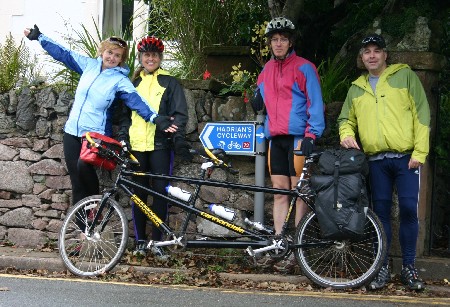“Where they Went” by Diane Daniel
(published Dec. 23, 2007, in the Boston Globe)
From Di’s eyes: This is a little catch-up piece, as it ran before I started posting my Globe column on the blog. I wanted to make sure I added it because I think it’s a great example of family travel that didn’t cost an arm and a leg. Well, maybe just an arm. It is London, after all.
WHO: Scott Weighart, 44, and Ellie Boynton, 46, and their children Hannah, 11, and Timmy, 8, of Brookline, Mass.
WHERE: London.
WHEN: One week August.
WHY: The family initially planned to visit Edinburgh, as Weighart is of Scottish heritage, but their passport applications were caught in the national backlog, and they had to cancel the trip. “They came two days after we were supposed to leave,” Weighart said. “I’d worked in London for three months after college, and we thought there would be a lot to do there for the kids. It was their first international trip.”
LOSING POUNDS: “It was a challenge trying to do a fun family vacation in a city where it’s easy to hemorrhage money,” he said. “Maybe we’d pay $8 for hamburgers here that would be 8 pounds there, which was $16.” They rented a flat in the South Kensington neighborhood. “It was near two kid-friendly museums, which were free, and near three tube lines.”
GAINING POUNDS: “We’d have breakfast at home, and take snacks for the night,” he said. “One of the fun things is going 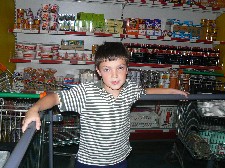 to grocery stores. We’d go to Sainsbury’s every morning for fresh and relatively cheap croissants and have fun trying new things, like rhubarb yogurt. Also, the English do unhealthy food really well. The kids loved Cadbury bars and the funny flavors for crisps, like prawn. We ate dinner at pubs a lot. There’s no smoking now, but you can smell the residue of decades of smoke.”
to grocery stores. We’d go to Sainsbury’s every morning for fresh and relatively cheap croissants and have fun trying new things, like rhubarb yogurt. Also, the English do unhealthy food really well. The kids loved Cadbury bars and the funny flavors for crisps, like prawn. We ate dinner at pubs a lot. There’s no smoking now, but you can smell the residue of decades of smoke.”
WEIGHING OPTIONS: Weighart packed a kid-friendly London guide, and with his laptop he also would check out activities beforehand on TripAdvisor. 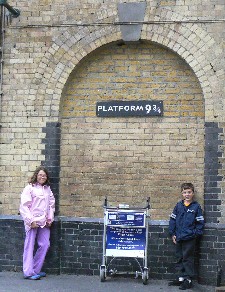 One day they went to the Camden Lock Market and took a canal boat ride to the London Zoo, but skipped the zoo because it would have cost the family $100. They also passed over the Tower of London for the same reason. Also deemed too pricey was a black-taxi Harry Potter tour. “It would have been $400 with a tip. We couldn’t stomach it,” Weighart said. “We went on our own to the rail station at King’s Cross, where they have Platform 9 3/4,” the fictional embarkation point for the train to Hogwarts (there is now a sign at the station but not a true platform).
One day they went to the Camden Lock Market and took a canal boat ride to the London Zoo, but skipped the zoo because it would have cost the family $100. They also passed over the Tower of London for the same reason. Also deemed too pricey was a black-taxi Harry Potter tour. “It would have been $400 with a tip. We couldn’t stomach it,” Weighart said. “We went on our own to the rail station at King’s Cross, where they have Platform 9 3/4,” the fictional embarkation point for the train to Hogwarts (there is now a sign at the station but not a true platform).
DOUBLE FUN: The kids loved the double-decker bus rides,” he said, and they saved on public transport by purchasing a discount booklet. “We had to have seats at the top front, of course. The kids started counting all the double-decker buses they saw; my son got to 1,000. Our book recommended taking bus No. 15, which goes all through downtown.” The kids enjoyed watching traffic on the left, and found the accents interesting, as well as names for things, like “toastie” for toasted sandwich.
MANY MUSEUMS: They visited the Royal Observatory in Greenwich, which they reached by boat, as well as the Science Museum and the Victoria & Albert Museum of Childhood. “It’s in East End London and has games, toys, and dolls from the last 300 years.”
 AN EYEFUL: The family splurged on the London Eye, about $80 total. “It looks like a Ferris wheel but is these huge glass pods that hold about 20 people. You book time in advance. You wait about a half hour and ride a half hour. From there I could even see the office I used to work in.”
AN EYEFUL: The family splurged on the London Eye, about $80 total. “It looks like a Ferris wheel but is these huge glass pods that hold about 20 people. You book time in advance. You wait about a half hour and ride a half hour. From there I could even see the office I used to work in.”

 I have a new favorite wine — the most wienerful wine in the world! Alas, from what I can tell, it’s
I have a new favorite wine — the most wienerful wine in the world! Alas, from what I can tell, it’s 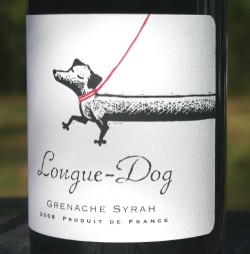

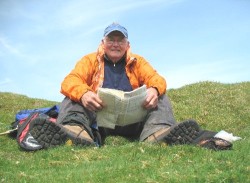
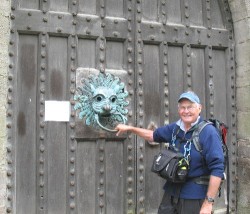

 to grocery stores. We’d go to
to grocery stores. We’d go to  One day they went to the
One day they went to the  AN EYEFUL: The family splurged on the
AN EYEFUL: The family splurged on the  audience of 50 or so sheep following my every move.
audience of 50 or so sheep following my every move.
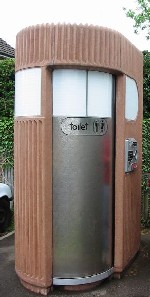 It was an automated tubular contraption, much like the one pictured here, but in this case tucked inside the hallway area between the conductor and the first car. I pushed the “open” button and the door slid open on its track, much like an elevator. Inside, I pushed the “close” and it closed.
It was an automated tubular contraption, much like the one pictured here, but in this case tucked inside the hallway area between the conductor and the first car. I pushed the “open” button and the door slid open on its track, much like an elevator. Inside, I pushed the “close” and it closed.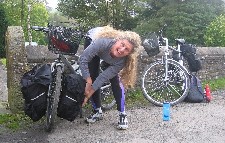 When we met our driver and got our bikes, we discovered that Wessel’s bike had no front panniers or water bottle cage. Had everything been free or discounted, would I have expressed my annoyance? Maybe a little, but maybe not. But because I was a regular bloke, I felt free to raise a little hell. It didn’t get me far. Wessel went without front panniers, and Victor and Marlene loaned us one of the water bottle cages from their bike.
When we met our driver and got our bikes, we discovered that Wessel’s bike had no front panniers or water bottle cage. Had everything been free or discounted, would I have expressed my annoyance? Maybe a little, but maybe not. But because I was a regular bloke, I felt free to raise a little hell. It didn’t get me far. Wessel went without front panniers, and Victor and Marlene loaned us one of the water bottle cages from their bike.
